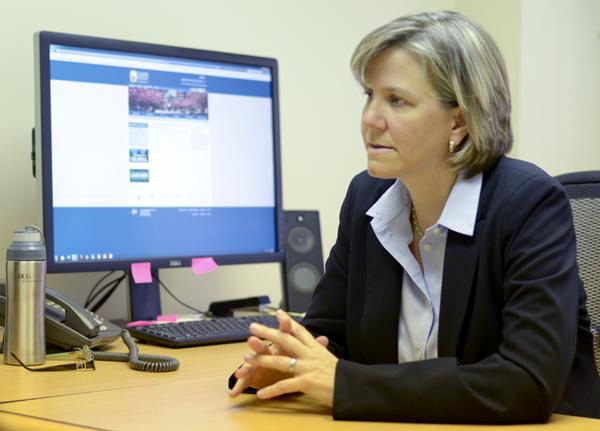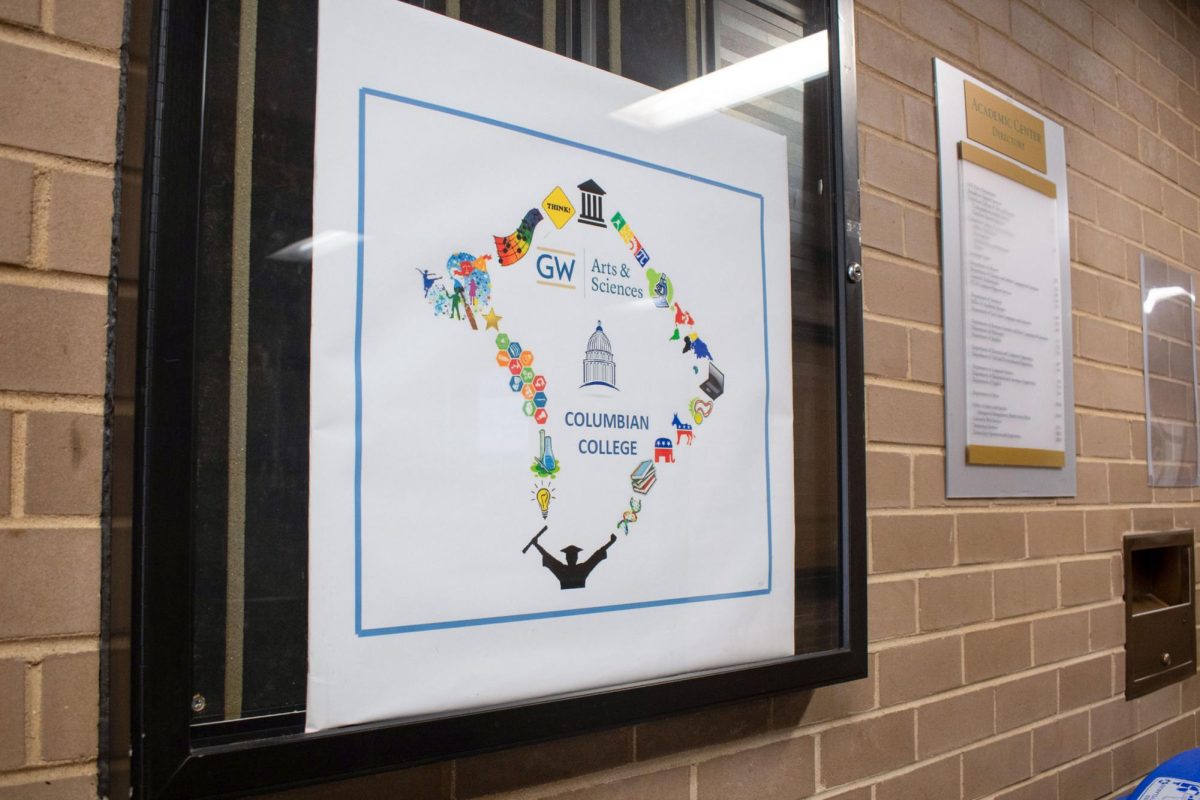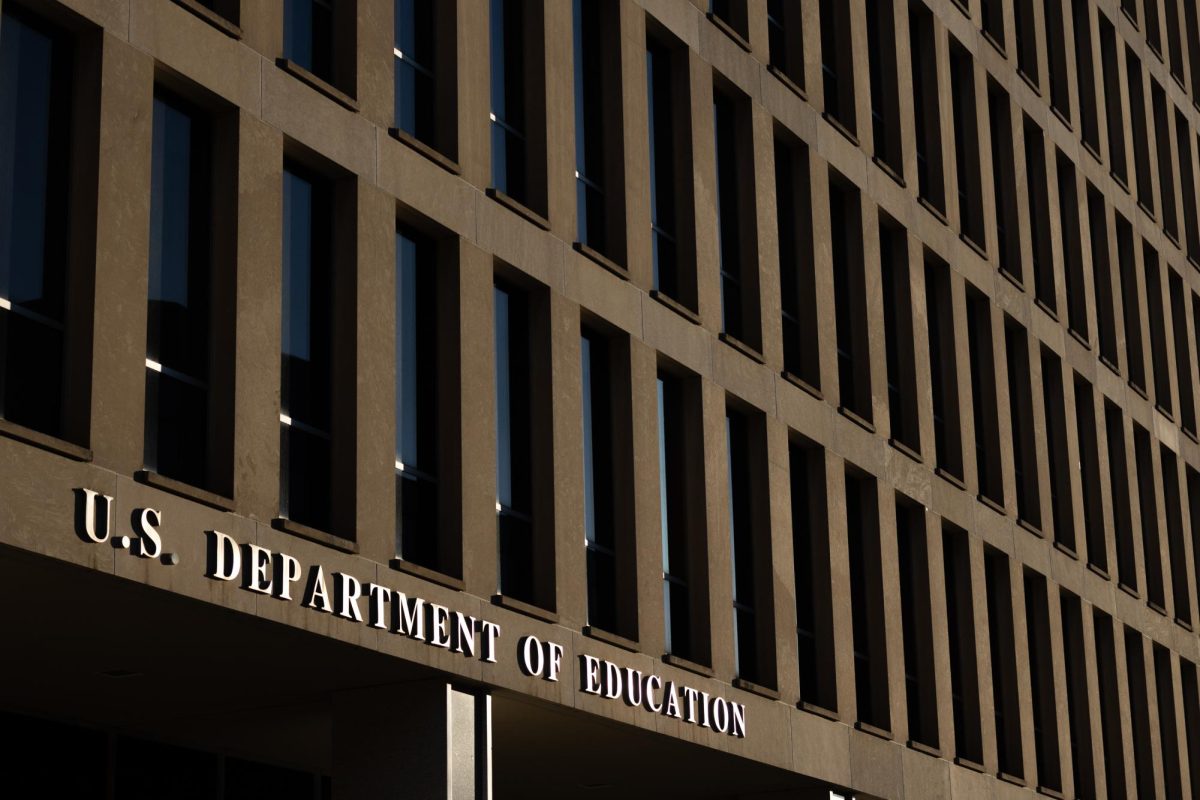The University admitted publicly for the first time Friday that it puts hundreds of undergraduate applicants on its waitlist each year because they cannot pay GW’s tuition.
Administrators now say the admissions process has always factored in financial need. But that contradicts messaging from the admissions and financial aid offices that, as recently as Saturday, have regularly attested that the University remained need-blind.
Students who meet GW’s admissions standards, but are not among the top applicants, can shift from “admitted” to “waitlisted” if they need more financial support from GW. These decisions affect up to 10 percent of GW’s roughly 22,000 applicants each year, said Laurie Koehler, the newly hired associate provost for enrollment management.
Admissions representatives do not consider financial need during the first round of reading applications. But before applicants are notified, the University examines its financial aid budget and decides which students it can actually afford to admit.
Without knowing, wealthier students who were slated to land on the waitlist are accepted, taking the spots of students who would need more financial aid from GW.
The quiet move away from declaring a “need-blind” policy came to light during an interview Friday with Koehler, who began reshaping practices of both the admissions and financial aid offices this summer.
But as recently as Saturday, admissions representatives told prospective students in an information session that their applications would be judged without glancing at their financial aid profiles. And until it was removed Saturday evening, the undergraduate admissions website read, “Requests for financial aid do not affect admissions decisions.” That webpage now explains GW’s “need-aware” policy.
Zakaree Harris, who reviewed applications at GW as assistant director of undergraduate admissions from 2007 to 2010, said he knew that senior admissions officials reviewed applications after he and his colleagues selected their choice of applicants. But he said he never knew that those officials weighed financial aid.
“Our policies, and even information that we were giving to families, were always about being need-blind in our process,” Harris said. “I do not recall and do not remember ever having a conversation about the specific nature of someone needing X amount of dollars and us making an admissions decision based upon that.”
Associate Vice President for Financial Assistance Dan Small and the since-retired Dean of Undergraduate Admissions Kathryn Napper both acknowledged the University’s commitment to need-blind admissions within the last two years.
“We’re still looking for students who will fit in well here. We’re still need-blind,” Napper said in an interview in October 2011.
But on Friday, Small confirmed that GW’s admissions policy does in fact consider a student’s financial need.
“By being need-aware, GW is better able to stay within its aid budget allotment as well as provide better aid packages for those students with financial need,” Small said.

Setting the record straight
The confession comes at a time when more colleges are taking financial need into account when awarding acceptance letters. Admissions and financial aid experts said that consideration gives universities more control over meeting financial and enrollment goals.
Koehler emphasized that a student’s financial need does not become a factor until after admissions representatives reach their initial conclusions.
“We have our internal preliminary decision of admit or waitlist or deny, and then we run the numbers and then we go, ‘Okay, we have to do a little bit of shuffling here,’” Koehler said. She said the decision only impacts students who are not among GW’s top applicants.
But for hundreds of students each year, those second-round decisions turn an acceptance into an almost-certain rejection. In 2012, less than 1 percent of students offered a spot on the waitlist got into GW.
Several admissions and financial aid experts said GW’s admissions policy should not have been characterized as need-blind.
Richard Vedder, director of the Center for College Affordability and Productivity, called GW’s past claims “dishonest.”
“It’s misleading,” said Vedder, who is also an economics professor at the Ohio University. “Need-blind would mean, ‘We don’t pay a bit of attention to financial considerations in making admissions decisions,’ and GW clearly does.”
University spokeswoman Candace Smith argued that GW’s characterization of the University’s admission policy as need-blind or need-aware was not “intentionally misleading.”
“It’s still the same process, but it’s a matter of one person defining it one way and one person defining it another way,” Smith said.
She pointed to the departure of Napper, the former admissions dean, who was previously in charge of GW’s communication with prospective students, as opening up an opportunity for GW to change its definition.
Napper retired last December, just a month after her office admitted it sent incorrect admissions data to U.S. News & World Report, leading to GW’s removal from the prestigious college rankings.
Stacking up against the competition
GW is an outlier among several peer institutions that are sticking to need-blind admissions. Only four of the 14 universities GW considers its peers call themselves need-aware.
Vedder wasn’t surprised to learn that GW considers financial need during the application process. While a need-blind admissions strategy tends to play favorably with prospective students and when soliciting donations from alumni, GW’s $1.37 billion endowment isn’t large enough to ignore the financial need of applicants, he said.
“It kind of sounds like they’re trying to have their cake and eat it too,” Vedder said.
The University’s endowment pales in comparison to many colleges that are need-blind and meet 100 percent of student’s need, such as Northwestern University, with its $7.1 billion endowment.
Other peer schools, like New York and Boston universities, also do not consider students’ financial need in the admissions process, but, like GW, don’t meet students’ full financial need.
Last year, GW and BU met an average of 88 and 89 percent of student’s demonstrated financial aid, respectively, compared to NYU which helped finance 55 percent of students’ financial need.
Koehler said considering financial aid in admissions means the University can help more students afford to attend GW.
The impact of admissions policies
Experts disagree whether prospective students and families with lower earnings would be turned off by need-aware practices.
After decades of need-blind admissions, Vassar College began considering financial need in the mid-1990s. It returned to a need-blind policy in 2007.
Vassar spokesman Jeff Kosmacher said the college’s new president brought back the admissions model that ignored students’ ability to pay as the university sought to recruit more socioeconomically diverse students.
“When we went to need-blind, we were inviting students who might not have otherwise thought that we were a choice for them,” Kosmacher said.
After GW’s top financial aid and admissions officials owned up to its need-aware policy this week, Koehler said she will begin addressing the way the policies are communicated by admissions representatives.
But at the end of an information session this weekend, a woman raised her hand to ask an admissions representative whether GW is a need-blind institution. The representative did not explain that financial need is considered after the initial review process, instead replying: “The read is need-blind.”
– Sarah Ferris contributed to this report.
This post was updated on Oct. 22, 2013 to reflect the following:
Clarification appended
The Hatchet reported that Associate Vice President for Financial Assistance Dan Small reaffirmed GW’s need-blind policy over the last two years. He never explicitly stated that GW is need-blind, but did not correct the record when the topic came up in interviews.







